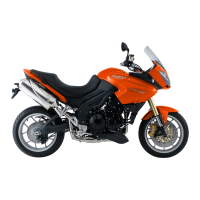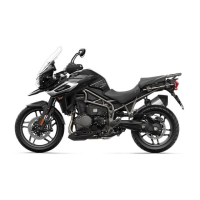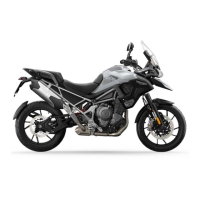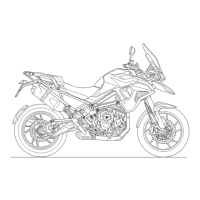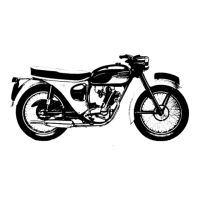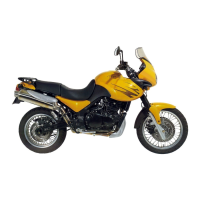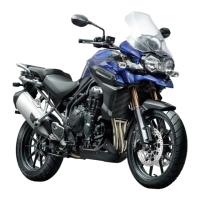I
DEFECTS
IN
OPERATION
When the engine runs erratically, faults other than carburation can be contributory
causes. Before interfering with the carburetter, the following possibilities should
be considered
:-
$4
(0)
Compression-Equal pressure in both cylinders; check tappet clearances.
I.
r
(b)
Moisture condensation (water)-Examine float chamber and H.T. cables.
i
(c)
Ignition System-Inspect the distributor points, clean and adjust if necessary.
:;,
"'
Contact breaker and condenser condition
is
most imponant. Sparking plugs should
i;
be cleaned and re-gapped (See Technical Data) and pressure tested. Correct timing
!;
!'
is
vital to good idling. in particular excessive advance and faulty operation
of
the
:,.
i
..
automatic mechanism must be recrified.
.
.
(d)
Check for air leaks:-
!
(i)
Between the MANIFOLD and CYLINDER HEAD.
(ii)
Between the MANIFOLD and CARBURETTER.
(iii)
Between the TWO HALVES of the CARBURETTER.
(iv)
At
the SUCTION CHAMBER CAP.
If, however, the engine and ignition are found to be faultless the following points
should be checked on the
carburetter:-
:v)
tP
!
2
STICKING
OF
PISTON
-
-
The symptoms here are either stalling and a refusal of the engine to run slowly or,
!
alternatively, lack of power accompanied by excessive fuel consumption. This
!
defect is easily detectable. When the engine is not running the piston should rest
:
'
,
.
upon the bridge
(28).
When raised by the hand through the air intake, the pist~n
!.
should drop freely and strike the bridge sharply and distinctly. To do this the filter
rubber connection must
first
be removed.
If
it
becomes prematurely arrested in
its
downward movement, or appears unduly
reluctant to break away from its position of rest on the bridge when an attempt is
made to raise
it
from this position, the jet should be lowered by means of
its
lever,
and the test repeated.
1
If the symptoms persist,
it
can be assumed that either the large diameter of the
1
piston is making contact with the bore of the suction chamber, or the small diameter
with the carburetter body, or that the piston rod
is
not sliding freely within
its
bush.
I
When, on the other hand, sticking has been eliminated by the act of lowering the jet,
i
the indication is that the needle
is
binding on the jet either due to
its
being bent or
to the latter being out of centre. Normally the needle should never touch the jet
I
orifice when correctly assembled.
(if visual evidence clearly indicates needle wear and jet ovality, both should
be
renewed).
Rectification should be conducted
as
follows according to the diagnosis:-
DIRT OR CONTACT BETWEEN THE PISTON AND SUCTION CHAMBER, OR
STICKING OF THE PISTON ROD
IN
ITS BUSH.
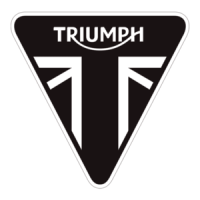
